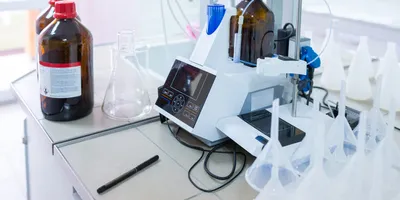In the realm of analytical chemistry, titration remains one of the most essential and widely used quantitative methods for determining the concentration of a specific substance in a solution. This technique hinges on two primary components: the titrant, the reagent of known concentration, and the titrator, the instrument that delivers the titrant with precision.
Understanding how titrants and titrators function—and how they interrelate—is crucial for laboratory professionals across pharmaceuticals, environmental science, food testing, and petrochemicals. This article explores what titrants and titrators are, their roles in titration, and why they are foundational to accurate chemical analysis.
What Is a Titrant?
A titrant is a solution of known concentration used to react with an unknown analyte during titration. The chemical reaction between the titrant and analyte allows for the precise determination of the analyte’s concentration.
Common Characteristics of Titrants
- Known Molarity: Titrants must be accurately standardized to ensure measurement integrity.
- Chemical Reactivity: Chosen to react specifically and completely with the target analyte.
- Stability: Stable under storage conditions to avoid concentration drift.
- Visibility (if applicable): May be colored or used with an indicator to detect the endpoint of the reaction.
Examples of Common Titrants
- Hydrochloric acid (HCl) for acid-base titrations
- Sodium thiosulfate for redox titrations
- Ethylenediaminetetraacetic acid (EDTA) for complexometric titrations
What Is a Titrator?
A titrator is a laboratory instrument designed to automate the titration process. It accurately dispenses the titrant into the sample and detects the endpoint of the reaction using sensors or indicators. Titrators minimize human error, increase reproducibility, and enhance throughput.
Types of Titrators
- Manual Burette Systems: Simple setups for basic titration needs
- Automatic Titrators: Programmable instruments that deliver titrant, measure pH or conductivity, and record results
- Karl Fischer Titrators: Specialized titrators used to determine water content in samples
Key Features of Modern Titrators
- Digital Interface: Allows for parameter input, method selection, and real-time data display
- Sensor Integration: pH electrodes, redox sensors, and conductivity probes ensure endpoint accuracy
- Precision Pumps: High-accuracy dosing mechanisms reduce variance in titrant volume
The Titration Process: Step-by-Step
Preparation: The sample and titrant are prepared; titrant concentration must be known.
Dosing: The titrator incrementally adds titrant to the analyte solution.
Reaction Monitoring: Sensors monitor the chemical reaction, looking for the endpoint.
Endpoint Detection: A sudden change in pH, conductivity, or color indicates the reaction is complete.
Calculation: The titrant volume used is recorded, and the analyte concentration is calculated using stoichiometric principles.
Applications of Titrants and Titrators
| Application Area | Functions | ||
|---|---|---|---|
| Pharmaceutical Industry | Assures the concentration of active ingredients; Confirms the purity of chemical compounds | ||
| Environmental Analysis | Monitors water hardness and pollution levels; Measures alkalinity or acidity in soil and water | ||
| Food and Beverage Testing | Quantifies sodium content; Tests acidity in wine and fruit juices | ||
| Industrial Manufacturing | Controls process chemicals; Ensures product consistency in coatings and detergents | ||
Benefits of Using Automated Titrators
- Enhanced Accuracy: Reduces subjective human interpretation
- Time Efficiency: Speeds up high-throughput testing
- Data Traceability: Ensures compliance through digital records
- Multi-Parameter Testing: Some titrators can perform several tests in sequence
Choosing the Right Titrant and Titrator
When selecting titrants and titrators, laboratory professionals should consider:
- Chemical Compatibility: Ensure titrant and analyte react completely and cleanly
- Instrument Sensitivity: Choose titrators with sensors appropriate for your analysis type
- Volume and Throughput Needs: Larger labs may benefit from multi-channel or robotic titrators
Precision Begins with the Right Tools
Titrants and titrators form the backbone of accurate chemical analysis in countless lab settings. While titrants provide the reactive substance necessary to determine unknown concentrations, titrators ensure that this substance is delivered with pinpoint accuracy. Together, they represent a synergy of chemical and mechanical precision.
As laboratories seek ever greater efficiency and reliability, understanding and optimizing the use of titrants and titrators will remain a cornerstone of high-quality analytical work.
Frequently Asked Questions (FAQ)
What is the difference between a titrant and a titrator?
A titrant is the reactive solution used in a titration, while a titrator is the instrument that dispenses the titrant and detects the reaction’s endpoint.
How do I choose the right titrant for my experiment?
Choose a titrant that reacts completely and specifically with your analyte and has a stable, known concentration.
Why should I use an automatic titrator instead of manual titration?
Automatic titrators improve precision, reduce human error, and allow for faster, more reproducible results.
Are titrants reusable?
No. Titrants must be freshly prepared or standardized regularly to ensure accurate results in each titration.











